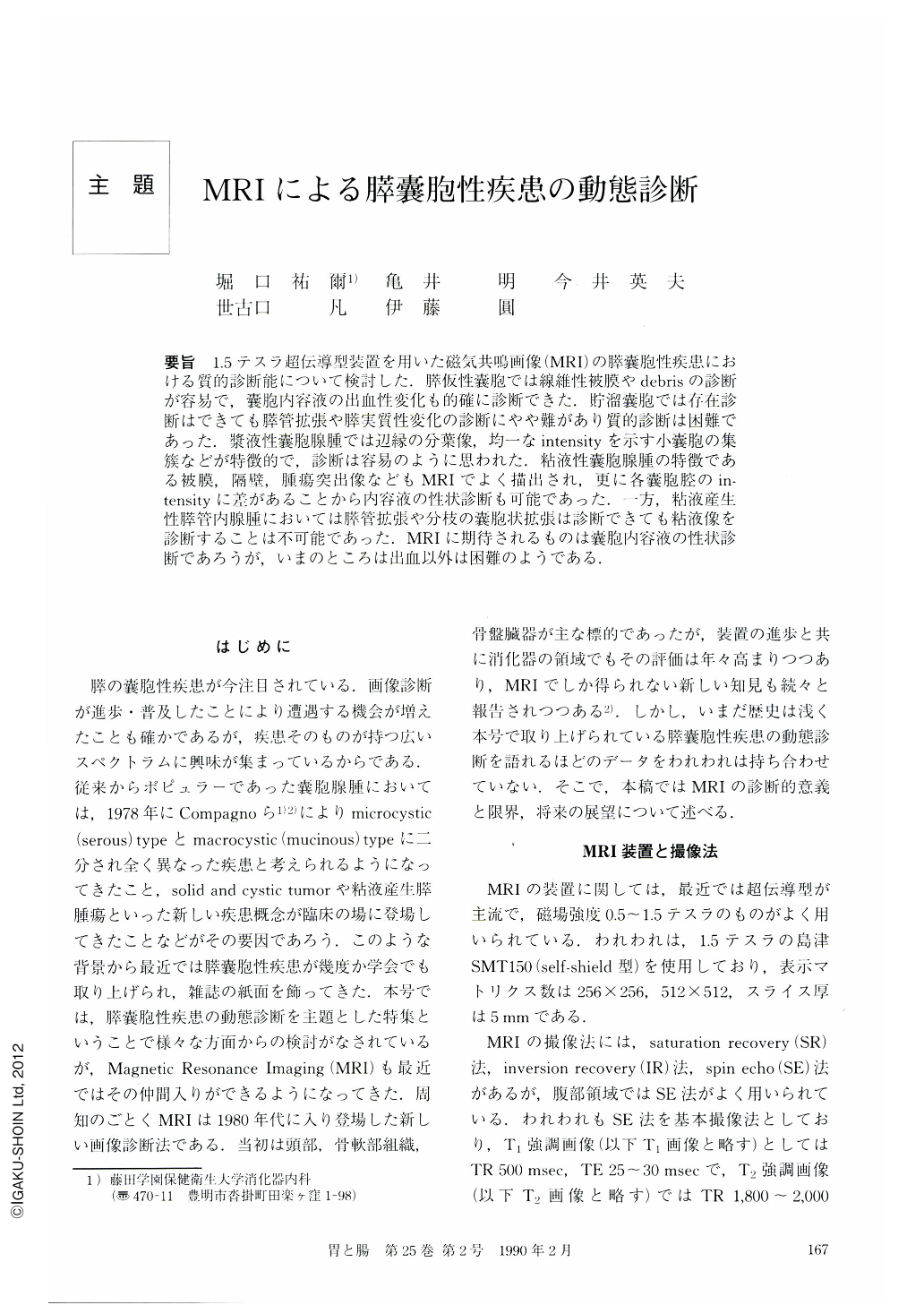Japanese
English
- 有料閲覧
- Abstract 文献概要
- 1ページ目 Look Inside
要旨 1.5テスラ超伝導型装置を用いた磁気共鳴画像(MRI)の膵囊胞性疾患における質的診断能について検討した.膵仮性囊胞では線維性被膜やdebrisの診断が容易で,囊胞内容液の出血性変化も的確に診断できた.貯溜囊胞では存在診断はできても膵管拡張や膵実質性変化の診断にやや難があり質的診断は困難であった.漿液性囊胞腺腫では辺縁の分葉像,均一なintensityを示す小囊胞の集簇などが特徴的で,診断は容易のように思われた.粘液性囊胞腺腫の特徴である被膜,隔壁,腫瘍突出像などもMRIでよく描出され,更に各囊胞腔のintensityに差があることから内容液の性状診断も可能であった.一方,粘液産生性膵管内腺腫においては膵管拡張や分枝の囊胞状拡張は診断できても粘液像を診断することは不可能であった.MRIに期待されるものは囊胞内容液の性状診断であろうが,いまのところは出血以外は困難のようである.
Magnetic resonance imaging (MRI), using the equipment with a 1.5 T superconductive magnet, was performed on 21 patients with one of cystic diseases of the pancreas. In pseudocyst, MRI revealed hemorrhagic change of fluid or debris deposition in addition to capsule formation. Retention cyst was depicted in all cases, but it was not possible to determine its etiology because of equivocal demonstration of pancreatic duct. In a case of serous cystadenoma, T1-weighted images showed lobulation of the border and a region of small hyperintensity elements. Findings characteristic to mucinous cystadenoma were thick wall, septa, and tumor excrescences on MRI as well as CT and ultrasound. The most specific finding on MRI was the variety of signal intensity of some compartments. It varied from the same intensity as ductal content to extremely high intensity due to hemorrhage. Mucinous contents, however, were not disclosed by MRI, although T1 time was considered to be shortened.
In conclusion, MRI seemed to be superior to some extent to CT and US in evaluating contents of fluid of cystic lesions of the pancreas.

Copyright © 1990, Igaku-Shoin Ltd. All rights reserved.


